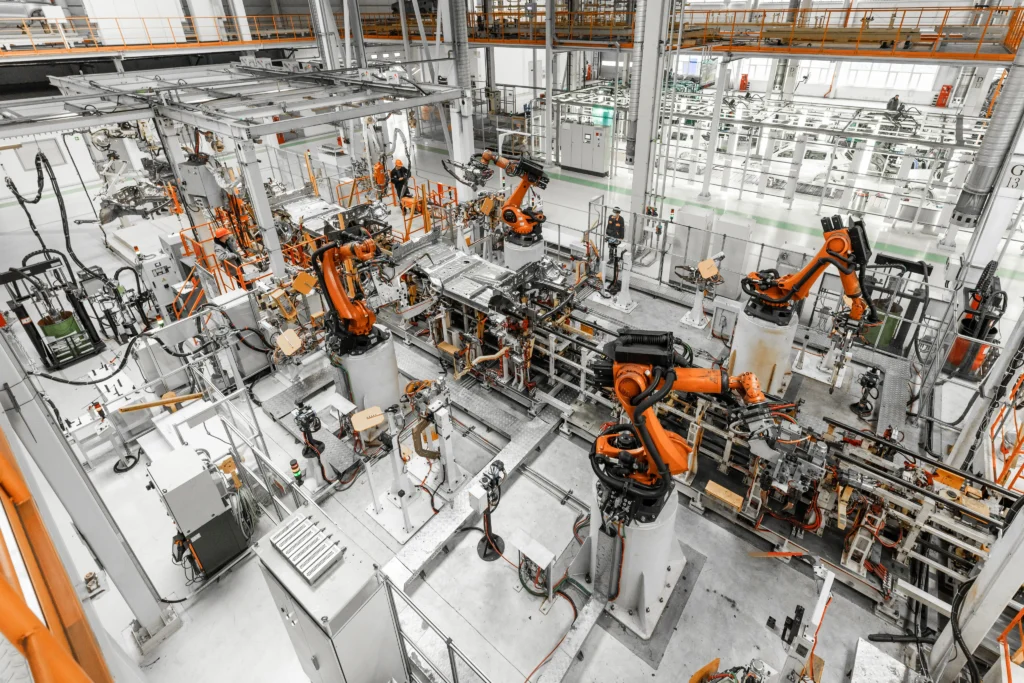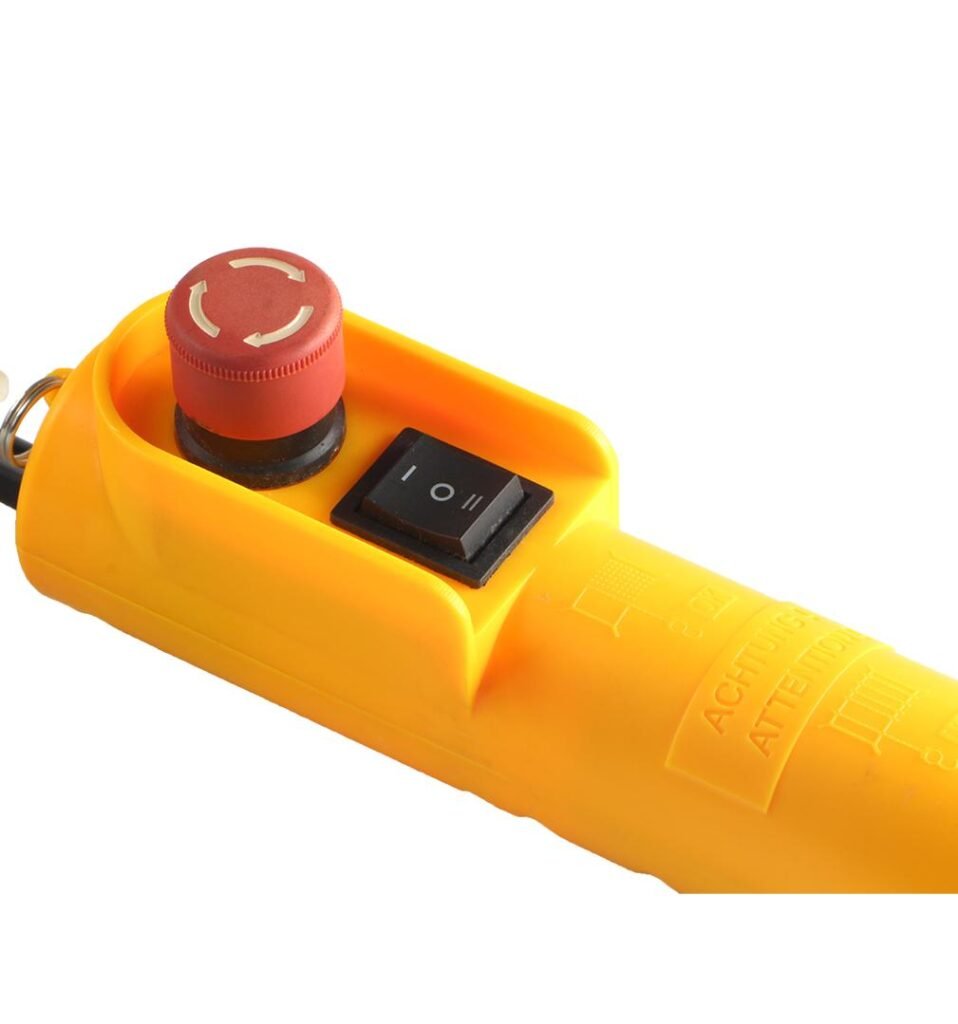오버헤드 크레인 원격 제어 전체 가이드
오늘날과 같이 빠르게 변화하는 산업 환경에서는 안전과 효율성이 매우 중요합니다. 오버헤드 크레인 원격 제어 시스템은 제조, 건설, 물류 등 모든 산업 분야에서 가장 가치 있는 도구 중 하나가 되었습니다. 작업자가 안전한 거리에서 크레인을 제어할 수 있어 가시성이 향상되고 생산성이 높아집니다. 이 가이드에서는 기본 구조를 살펴보고 [...]
자세히 보기

올바른 선택 크레인 원격 제어 는 크레인을 사용하는 모든 산업 작업에서 중요한 결정입니다. 투박하고 오래된 리모컨으로 크레인을 제어하는 것과 안전, 효율성, 생산성을 높여주는 매끄럽고 인체공학적인 시스템으로 크레인을 제어하는 것의 차이를 상상해 보세요. 리모컨을 잘 선택하면 작업 방식을 혁신하여 작업을 더 원활하고 안전하며 비용 효율적으로 만들 수 있습니다.
건설, 제조, 창고, 중량물 운반과 같은 산업에서 리모컨은 정밀한 핸들링과 작업자 보호에 직결되는 역할을 합니다. 하지만 시중에 수많은 종류와 기능이 나와 있는 상황에서 어떻게 완벽한 제품을 고를 수 있을까요? 이 가이드는 여러분의 필요와 환경에 맞는 크레인 리모컨을 선택하는 핵심 요소를 탐색하는 데 도움이 되는 동시에 비즈니스의 워크플로와 안전을 최적화하는 데 도움이 될 것입니다.
기본 사항부터 시작하겠습니다: 크레인 리모컨이란 정확히 무엇인가요? 작업자가 원거리에서 크레인을 들어 올리거나 내리고 이동하는 등 크레인의 움직임을 제어할 수 있는 무선 또는 유선 장치입니다.
무선 크레인 리모컨에는 세 가지 주요 유형이 있으며, 각각 고유한 특징과 이상적인 용도가 있습니다:
| 원격 제어 유형 | 설명 | 최고의 애플리케이션 |
|---|---|---|
| 버튼식 무선 리모컨 | 기본 동작을 위한 전용 버튼이 있는 간단한 컨트롤 | 소형 오버헤드 크레인, 경량 갠트리 크레인 |
| 조이스틱형 무선 리모컨 | 다축 동시 이동이 가능한 고급 제어 기능 | 정밀한 제어가 필요한 대형 크레인 |
| 맞춤형 무선 원격 제어 시스템 | 위험하거나 극한 환경과 같은 특수한 환경을 위한 맞춤형 솔루션 | 정유 공장, 화학 공장, 극한의 온도 또는 부식성 지역 |
각 유형은 비용 효율성부터 정밀한 작동 및 내구성까지 고유한 장점을 제공합니다. 크레인 및 사용 목적에 맞는 리모컨을 선택하려면 이를 이해하는 것이 중요합니다.
업무마다 제어의 복잡성 수준이 다릅니다. 다음은 작업 요구에 따라 원격 제어 유형을 조정하는 방법에 대한 분석입니다:
표: 작업 유형별 원격 제어 기능
| 운영 복잡성 | 권장 원격 유형 | 주요 기능 | 혜택 |
|---|---|---|---|
| 기본 2-4 방향 이동 | 버튼형 리모컨 | 간편한 버튼, 간편한 사용 | 비용 효율적이고 안정적인 |
| 다기능 정밀 작업 | 조이스틱형 리모컨 | 정밀한 동시 축 제어 | 높은 유연성 |
| 위험하거나 극한 조건 | 맞춤형 원격 시스템 | 방폭형, 견고한 케이스 | 안전성 향상 |
어떤 작업에서든 일상적인 워크플로에 적합한 컨트롤을 선택하면 오류를 줄이고 안전성을 높일 수 있습니다. 귀사의 사양에 맞게 제작된 맞춤형 솔루션에 대해 문의해 주세요.
리모컨을 선택하는 데 있어 중요한 요소는 다음과 같습니다:
| 요인 | 중요한 이유 | 확인해야 할 사항 |
|---|---|---|
| 신호 안정성 | 안전과 효율성을 위한 통제력 상실 방지 | 주파수 호핑 기술, 간섭 방지 |
| 배터리 성능 | 운영 중단 최소화 | 긴 배터리 수명, 빠른 충전, 배터리 잔량 표시기 |
| 인체공학 | 작업자의 편안함과 정확성 | 가볍고 잘 배치된 버튼, 미끄럼 방지 그립 |
| 안전 기능 | 작업자 보호 및 사고 예방 | 접근 가능한 중지 버튼, 신호 암호화, 페일 세이프 셧다운 |
| 내구성 | 원격은 열악한 조건에서 살아남아야 합니다. | IP65 이상의 방수 및 방진 등급 |
시설과 운영에 맞게 이러한 모든 기준을 충족하는 모델을 살펴보려면 문의해 주세요.


크레인 원격 제어로 안전과 효율성을 높이는 방법을 알아보세요. 신뢰할 수 있는 크레인 리모컨을 살펴보고 지금 맞춤형 솔루션을 요청하세요!
환경마다 다른 과제가 있습니다. 환경적 요인이 리모컨 선택에 미치는 영향은 다음과 같습니다:
| 환경 | 권장 기능 | 샘플 산업 |
|---|---|---|
| 더스티 & 아웃도어 | 튼튼한 케이스, 강력한 신호 저항 | 건설, 광업 |
| 실내 제어 | 컴팩트한 인체공학적 디자인, 간섭 최소화 | 창고, 제조 |
| 극한 조건 | 방폭, 내열성 | 화학 공장, 정유 공장 |
사이트의 조건에 맞게 특별히 테스트된 리모컨을 추천해 줄 수 있는 전문가와 상담하는 것이 현명합니다.
기술은 계속 발전하여 새로운 혜택을 가져다줍니다:
안전과 생산성을 향상시키는 최신 크레인 원격 제어에 투자하여 업계에서 앞서 나가세요. 데모 또는 맞춤형 기술 상담이 필요하면 언제든지 문의하세요.
올바른 리모컨을 선택하면
잘 관리하세요: 정기적으로 청소하고, 떨어뜨리지 않도록 주의하고, 배터리를 적절히 충전하세요.
교육, 보증 및 지원을 제공하는 평판이 좋은 제조업체의 소스입니다.
특히 바쁜 운영 환경에서는 백업 장치를 준비해 두세요.
잘 관리된 리모컨은 수명과 안정적인 워크플로우를 보장하여 원활하고 안전한 작업을 유지합니다.
올바른 크레인 리모컨을 선택하려면 작업자의 운영 요구와 올바른 기술을 일치시켜야 합니다. 올바른 리모컨은 안전성을 기하급수적으로 향상시키고, 작업자의 정밀성과 편안함을 강화하며, 전반적인 생산성을 높여줍니다. 모든 작업은 고유하지만 신호 신뢰성, 인체공학, 안전, 환경별 내구성에 중점을 두면 이상적인 선택을 할 수 있습니다.
크레인 제어가 워크플로우의 약한 고리가 되지 않도록, 작업자만큼 열심히 일하는 원격 제어에 투자하세요. 지금 바로 연락하여 비즈니스 요구 사항에 맞는 완벽한 크레인 원격 제어 솔루션을 찾아보세요.
버튼형, 조이스틱형, 맞춤형 무선 시스템
주파수 호핑 및 간섭 방지 기능 살펴보기
보통 100~300피트 사이
내구성과 런타임을 위해 리튬 이온 배터리가 선호됩니다.
이는 장치가 방진 및 방수 기능을 갖추고 있음을 의미합니다.
작업자 피로 감소 및 정확도 향상